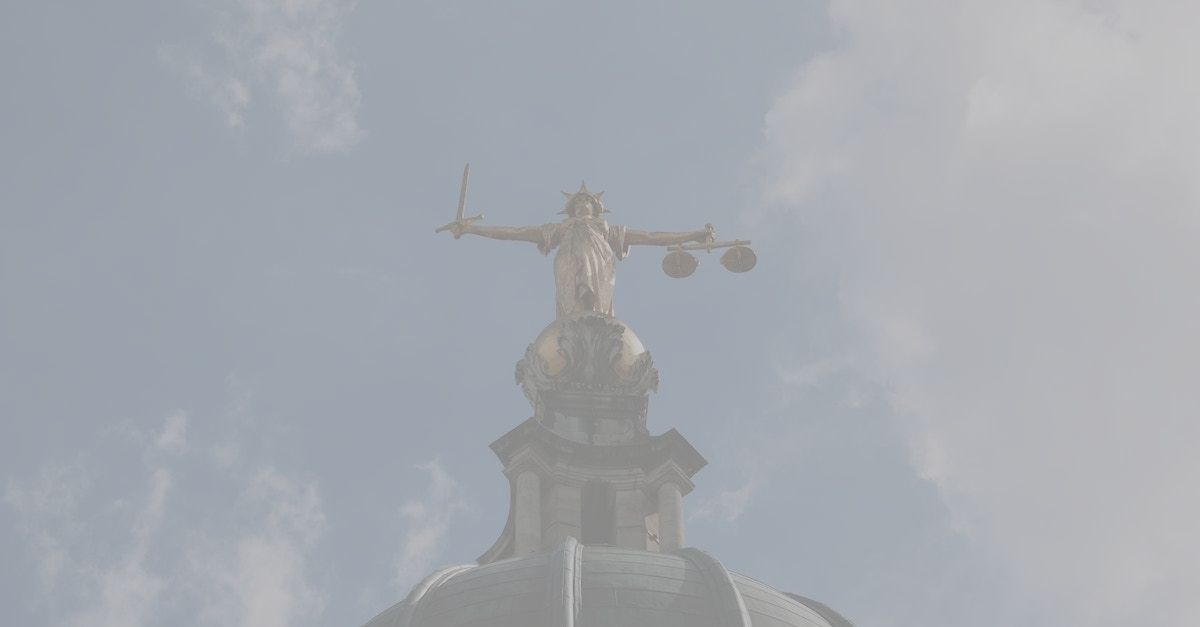Defending an Indecent Image Allegation
Following 'the knock' on the door, or police attendance at work you may be facing allegations of making indecent images of children and whilst experiencing the agonising wait for the police investigation to conclude you are wondering how to defend your case.
Call us Now
Indecent image offence investigations are heavily reliant on forensic examinations
of the electronic devices seized from the suspect, this can include; mobile phones, laptops, cameras, USB drives and tablet devices. Aside from what the suspect says in their police interview, forensics are a key aspect and will be the ultimate deciding factor as to whether a prosecution proceeds against the accused.
The offences
The three main indecent image offences include:
Other offences can and often do arise in image cases such as possession of extreme pornography,
possession of a prohibited image, or sexual communication with a child.
What are Indecent Images?
An indecent image is an image or data which is capable of being turned in to an image which is of an indecent nature and depicts a child under the age of 18 years old.
Whether an image is indecent is for the court or jury to consider by applying an objective test, taking into consideration the age of the child. The circumstances in which the photograph has been taken and motive of the person who took the image is not a relevant factor which requires consideration when an indecent image offence is in question.
How is the Age of a Child Proven?
In some cases the images suspected to be indecent can be on the very cusp of being legal. This can apply in cases where pornography is viewed which contains people who look very young, but in fact are adults. Where the age of the person depicted comes into question it is a task for the jury to determine age. Expert evidence is inadmissible on the subject of age, you can therefore not request a forensic expert to age the people in an indecent image.
Defences to Indecent Image Allegations
Legitimate Reason
This defence applies to offences of distribution of indecent images and/or possession of indecent images.
The accused must provide that they had a legitimate reason for the distribution or the possession. Whether a reason is legitimate depends on the facts of the case and circumstances. The jury will listen to the reason given by the defendant will determine with guidance on the law given by the judge.
Lack of Awareness
It is a defence for a person to say that they had not seen the photographs themselves, and therefore did not know nor have any cause to suspect them to be indecent.
Marriage and other Relationships
Section 1A of the Protection of Children Act 1978 and section 160A of the Criminal Justice Act 1988 provide confirmation that a defence is available for photographs of a child aged over 16 where the accused is married to, or in a civil partnership with them and where there is the consent from the child for that photograph to have been take and for the accused to have it in their possession.
Unsolicited Photographs
It is a defence if the accused can show that they received the image without requesting it and that they did not keep it for an unreasonable time. The issue of whether the length of time was unreasonable is again a matter for a jury to determine when hearing the facts of the particular case.
What If The Image Was Deleted?
Whenever a file is created on a device the operating system allocates available space to it. Unallocated space, sometimes referred to as unallocated clusters, is space that is not allocated to active files within the system of the device. Therefore, the user does not have access to an indecent image, or data capable of being turned into an image if the forensic examination shows that the evidence was retrieved from unallocated clusters. But does this escape liability? the answer is no, although the accused would not be able to access or control the image, the CPS in these circumstances are likely to charge for the offence of making an indecent image This would require the CPS to prove that at some stage the image was created on the device, which led to the allocation of the cluster, not that the user could access it.
Can Forensics Recover Deleted Indecent Images?
In some circumstances yes, the police can recover deleted files, even where they have been removed from the device users Recycle Bin. From a forensic viewpoint, the file will remain live on the drive and forensic software is used to carve through all areas of a hard drive and is able to retrieve previously deleted files which are no longer accessible to the user.
If specialist deletion software has been used then whether the police can recover the files varies and it would depend on the deletion software.
Police Forensic Examinations
Many police forces outsource forensic work to forensic analysis companies who prepare the initial Streamlined Forensic Reports (SFR's) for them. This is usually due to the huge back logs police are currently facing and the vast amount of cases requiring device examination.
What Should An SFR Contain In An Indecent Image Case?
SFR's are not necessarily detailed or lengthy reports, they are prepared to provide a summary of what has been found and will include:
- The quantity of images found
- Whether they are accessible on the device; and
- Any indicative search terms -indicative search terms are words or phrases that the user may have used on the device in order to obtain images, or which suggest an interest in underage images and/or videos.
Where the accused is defending the case their legal team are required by the Criminal Procedure Rules to say why the SFR is not accepted, and what the issues with it are. This will trigger the requirement for service of an SFR2, which can be more detailed and respond to the defence issues raised.
How do the Police Grade Indecent Images
The police use a database referred to as the Child Abuse Image Database (CAID), this was created to assist the police with cataloguing and grading indecent images of children, and to identify victims of child sexual abuse. This can speed up forensic work on devices as the software has access to all images compiled from devices seized in investigations worldwide. CAID uses software to review files found on any seized device and compares them with images held within police databases.
CAID processes images using 'hash' values, this is the metadata attached to each image file, once the image has been allocated the same grading by three separate UK Police forces it will be stored on CAID as a 'trusted' image. The grading categories are A- the most serious indecent image, B - images which do not involve penetration, C- lower level images which often relate to children in a state of undress or in a sexual pose.
Points to Consider When Defending an Indecent Image Case
Being accused of making, possessing, and/or distributing child pornography can be very distressing, embarrassing and life damaging. To protect your interests a specialist approach must be taken when defending indecent image allegations which are highly sensitive cases. Having knowledge of the way in which forensic examinations are conducted and images graded is essential.
The main points to consider when preparing a defence, and working with defence forensic experts include, but are not limited to:
- Accessibility of the Images
- Location of the Images
- Internet History of the Device User
- Interaction with the image file by the user
- Any relevant chats on the device relating to indecent images
- Carefully assessing the forensic work of the police and reliability of the expert used is also an important factor to consider. Raising any evidential issues which may arise from the processes and procedures applied can be advantageous.
How Eventum Legal Can Help?
For many years we have represented some of the most complex indecent image cases which have consisted of vast amounts of forensic evidence requiring very in depth analysis. Working with some of the country's leading barristers and forensic examiners we ensure a trusted an highly competent team are assigned to our clients cases. Having a keen eye for detail and not being afraid to challenge the police and CPS is what we pride ourselves on.
The consequences of a conviction for indecent images can be grave. A conviction has the power to take away a persons freedom, career and family life. Our aim is to make a difficult process more bearable for clients and our client care team strive to provide emotional support to them, whilst our excellent lawyers take care of the legal aspects of the case.
To discuss your case or if a family member or friend is currently facing indecent image related allegations, contact us today
for a free, non judgemental and strictly confidential discussion. We will work with you to put an action plan in place and work to get the best outcome possible.
We Can Help With

Has your case been listed for pre-trial review? Are you concerned about what the hearing may entail? Our team have put together this short fact sheet which provides some guidance as to why a pre-trial review may be listed and what happens in the courtroom. Pre-trial reviews are not always necessary, however in cases which may have complex issues, be anticipated to be lengthy trials, or issue have arisen during trial preparation between the parties, then a pre-trial review is likely to be required. What is a Pre Trial Review? A pre-trial review is exactly what the name suggests, it is an opportunity for the court review the case prior to trial. The judge will ensure that both parties have met previous directions set by the court, and that there is no outstanding issues or reasons which may cause a delay to the trial. If there are any issues that have arisen between the parties they will be aired and the judge, where required, may set directions to the prosecution and defence with the aim being to resolve the problems, and to enable trial to begin and run effectively. Issues that can arise during trial preparation may include: 1. Applications to introduce bad character , this can be of the defendant or any other trial witnesses. 2. Applications to introduce hearsay evidence 3. Problems with witnesses 4. Delays caused by either part, where material should have been served and hasn't. 5. Applications for disclosure of documents which the defence may need and they are being withheld. Do I need to attend my pre-trial review? Yes, the defendant in a case is almost always required to attend their pre-trial review. It can also be useful for the defendant's attendance so that they can remain fully involved and aware of the process and decisions being taken in their case. You will not be asked any questions at the hearing but the judge may wish for you to acknowledge the outcome of the hearing and directions set, particularly if there is work for the defence team to carry out. Will my barrister attend my pre-trial review? You must always be represented at any court hearing. Our team take great pride in our meticulous preparation for all court hearings and your barrister would be instructed to attend your pre-trial review, with a detailed brief which would detail any issues we have with the prosecution or delays that are affecting our ability to prepare for trial. Do my witnesses have to attend my pre-trial review? No, your witnesses do not have to attend your pre-trial review. No evidence will be heard during the hearing, it is to establish readiness for trial only, resolve issues that could potentially cause delays, and to give the court confirmation that the current date listed for trial will be able to remain. How long does a pre-trial review hearing take? How long a pre-trial review hearing takes depends on the nature of the case and whether any issues require addressing by the judge. The court will usually want to process pre-trial review hearings quickly, and in sexual offence or domestic abuse cases the hearings can last anywhere from 10 minutes to one hour. How Eventum Legal can help Our team take a meticulous approach to trial preparation and will always be alert to any issues that could affect your case. We take a no stone unturned approach and we are not afraid to challenge decision of the CPS at hearings before the courts. We have select barristers which we work regularly with when defending sexual and domestic violence cases so you are provided with a strong and experienced team who are dedicated thorough preparation and presentation of your case. If you have a pre-trial review hearing approaching and are unrepresented, or feel that your current legal team are not making the progress required then contact us for a free initial consultation where we will assess your case, circumstances and the future of any court hearings.



